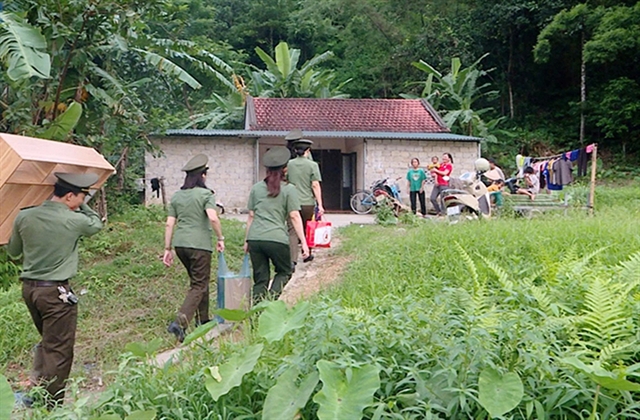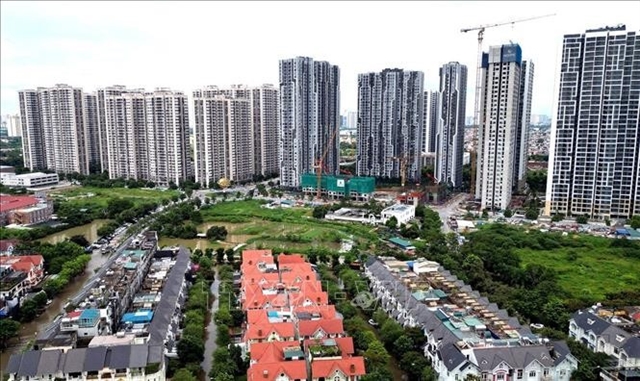 Life & Style
Life & Style
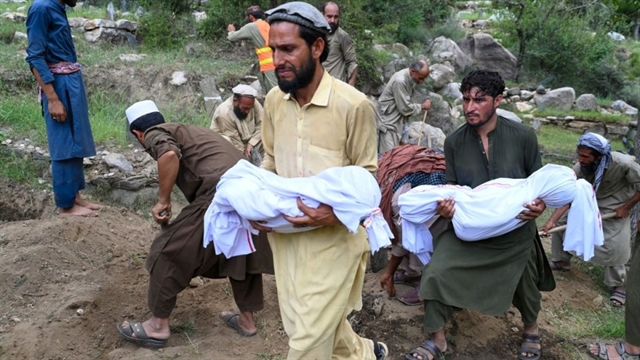
by Việt Dũng and Hồng Linh
Long An’s rich culture and history are not only a source of pride for its people, but also a great tourism strength which the Mekong Delta province is keen to utilise.
One noteworthy landmark is the province's revolutionary historical heritage site (also known as Bình Thành Military Base Relic), located in Bình Hòa Hưng Commune, Đức Huệ District.
The site includes facilities such as a forest area with reconstructed thatched houses used by various units of the Long An Provincial Party Committee during Việt Nam's two wars of resistance against France and the United States, an exhibition house, and a temple.
Many wartime artefacts, such as documents, farming equipment and weapons, are preserved here and showcase the lives of Long An people during the wars, helping visitors gain a deeper understanding of history.
At the exhibition house, visitors are guided through the history of the two wars and can explore models of revolutionary bases, daily life of the locals and liberation fighters.
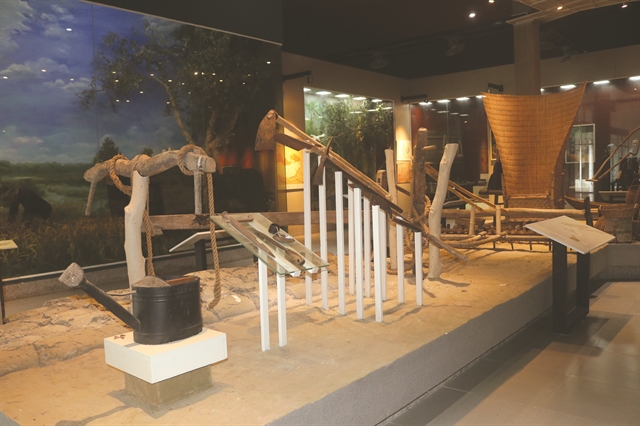 |
| Artefacts are being exhibited at Long An Province revolutionary historical heritage site in Bình Hòa Hưng Commune, Đức Huệ District. - VNS Photo Hồng Linh |
Visitors can pay respects at the memorial temple for war martyrs and tour the former revolutionary base. Additionally, it is home to memorial plaques with the names of over 26,000 fallen soldiers who sacrificed their lives in the two wars for independence.
The site was chosen as a military base during the wars, due to its unique geographical location.
It is a low-lying area with marshes and high ridges, covered in wild plants like melaleuca and reeds. Between the rivers of Vàm Cỏ Đông and Vàm Cỏ Tây, it connects the southeastern and southwestern regions of Việt Nam.
Moreover, it is near Sài Gòn, the seat of the South Việt Nam regime, and close to the Cambodian border.
During the war against the French, this site was known as the "Mốp Xanh" base, marking an important starting point in the resistance movement in the South.
During the war against the United States, it served as a key revolutionary base for the Long An Provincial Party Committee and as a strategic command post, leading resistance movements throughout the 21 years of conflict.
 |
| The temple honouring the fallen soldiers for Việt Nam's independence at the Long An Province Revolutionary Historical Heritage Site in Bình Hòa Hưng Commune, Đức Huệ District. - VNS Photo Hồng Linh |
The former revolutionary base was recognised as a national heritage site by the Ministry of Culture, Sports and Tourism in 1998, and is currently managed by the Long An Provincial Museum.
According to Trần Thị Thu Hương, an on-site tour guide at the historical site, it is an attractive destination for local students from nearby areas, and students from HCM City University of Social Sciences and Humanities, to learn about the history, and participate in community activities.
"The site holds great significance in Long An and national history, preserving the heroic values of the past and honouring the soldiers who sacrificed for national independence, helping the younger generation better understand history," she said.
Vương Thiên Lý, a visitor, said: “I was proud to visit the site to witness an important part of the nation's history, as well as to offer incense at the memorial house, expressing gratitude to the soldiers who sacrificed for national independence and freedom.”
Another destination for people who appreciate history is the Nguyễn Hữu Thọ Memorial Complex, an attractive destination for visitors to Bến Lức District.
It was recognised as a National Heritage site by the Ministry of Culture, Sports and Tourism in June 2015.
It covers an area of 10,000 square metres, and includes multiple structures such as a temple, an exhibition house, a souvenir shop, and a library.
 |
| Inside the Nguyễn Hữu Thọ memorial house in Bến Lức District, Long An Province. - VNS Photo Hồng Linh |
Lawyer Nguyễn Hữu Thọ, born in 1910, was a leader of the South Việt Nam liberation forces, dedicating his life to the nation's independence and reunification.
He was Vice President of the Socialist Republic of Việt Nam in 1976, and from 1981 to 1987, he served as Chairman of the National Assembly and Vice Chairman of the State Council of the Socialist Republic of Việt Nam, and was elected Chairman of the Việt Nam Motherland Front’s Central Committee in 1988.
He made significant contributions to Việt Nam's independence and freedom, the Communist Party’s renewal policy, helped draft the 1992 Constitution, and proposed numerous reforms to modernise the state apparatus, the National Assembly, and the Motherland Front.
When visiting the Nguyễn Hữu Thọ Memorial Complex, visitors can offer incense to honour him and explore different stages of his eventful life, with artefacts such as his personal items and documents on display at the exhibition house.
In addition, it is a special destination for the people of Long An, as it is one of the largest libraries in the province, preserving valuable knowledge, not just about history.
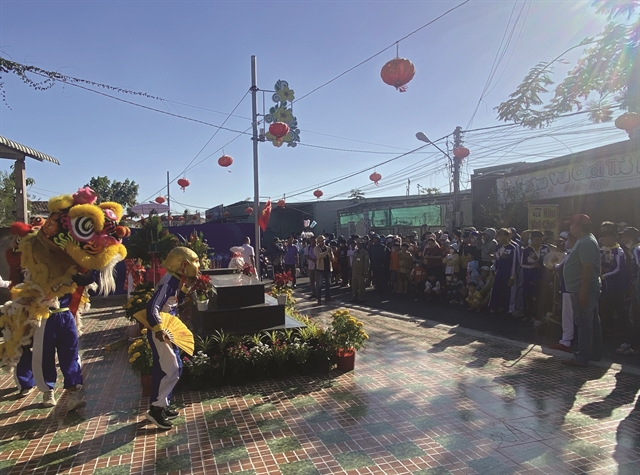 |
| The Làm Chay Festival held in Châu Thành District attracts many visitors every year, and it is an important part of the local culture. - VNA Photo |
Long An also has several unique traditional festivals, such as the Làm Chay Festival held in Châu Thành District every January 14 of the lunar calendar for two days.
Originally meant to pray for the peace of war martyrs who died during the French invasion, after many decades the event is now a fun yet meaningful festive occasion to pray for peace and prosperity.
The festival is held across different temples, with activities such as offerings to the deceased, visiting graves, a parade with a statue of King of Ghosts, and even fun lion dances and folk games.
Every year, it attracts tens of thousands of participants (including visitors outside of the district), and the locals have always maintained all the rituals, cultural values, beautiful traditional outfits, and grand ceremonies that have made the festival such an iconic and beloved event of the people here.
In 2015, the festival was recognised as a national intangible cultural heritage.
 |
| School students are seen at the Nguyễn Trung Trực Memorial Temple in Tân Trụ District, Long An Province. - VNA Photo |
Preserving culture and history
Long An has around 126 cultural, historical and archaeological heritage sites, including 21 national-level relics, that all provide plenty of educational value as well as attract tourists.
Other heritage sites include the House of Bộ Thỏ - where the first Communist Party cell of Chợ Lớn was formed, the Đức Hòa Crossroads Relic Site, the Base of the Regional Party Committee and Administrative Committee of the Southern Resistance, the Vàm Nhựt Tảo Relic Site, and many other historical areas.
Field trips at these sites for local school and university students are frequently organised to get them to know more about the province's history and culture.
Many tour programmes have been created that incorporate these destinations in order to both educate and entertain visitors.
In 2023, the province had around 176,000 visitors attending traditional festivals at its cultural and historical heritage sites. Meanwhile, just in the first half of the year, Long An already recorded around 140,000 such visitors.
The province has been paying close attention to preserving its heritage sites, with many positive results so far. In the first half of the year, around VNĐ100 billion from private sources have been mobilised for renovating and repairing them.
It has also been increasing its promotion of these sites on many media platforms, as well as including them in school curriculums.
Over 123,000 students and youth union members have taken part in cleaning-up and planting trees at the sites.
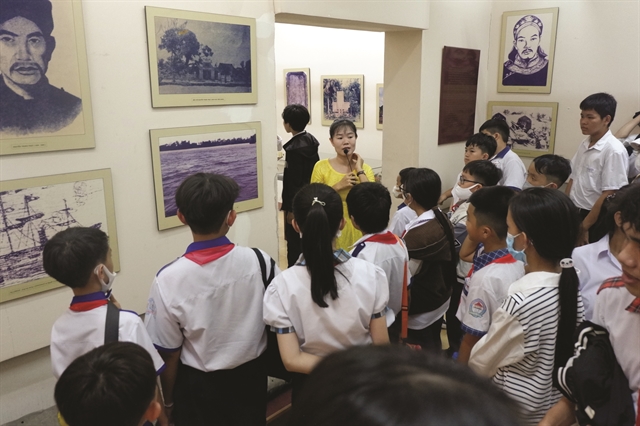 |
| The Long An Museum is a noteworthy destination for history lovers. - VNA Photo |
According to officials at a conference held by the provincial Department of Sport, Culture and Tourism in August, Long An’s historical and culture sites are being put to good use when it comes to education and tourism.
However, there are still numerous limitations hindering these sites’ ability to serve tourists, such as a lack of diversity of souvenirs, underdeveloped traffic infrastructure, and a lack of connectivity among tourist destinations.
The province will organise the Long An Province Cultural - Sport - Tourism Week and a Korean cultural exchange event from November 28 to December 4 in Tân Ân City.
The large-scale event aims to promote the image of Long An’s culture and its people to both domestic and foreign tourists.
Many activities are held as part of the event, including a cultural exchange space, sport and music competitions, and a conference to solicit investment in Long An - South Korea tourism. Products with Vietnamese OCOP certification will also be displayed to highlight regional specialties.
With the province's continuous efforts in protecting its heritage, not only for future generations but also for tourism development, one can hope that more and more people can know of and appreciate Long An's history and culture. VNS


